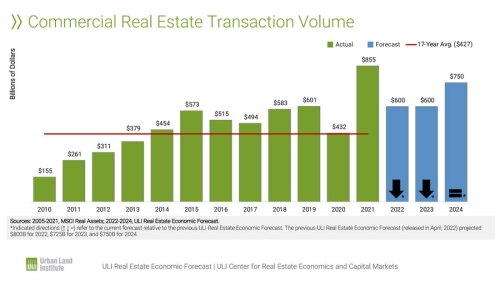With global lockdowns, limited international travel, and work-from-home procedures slowly becoming routine, the coronavirus pandemic is leaving an indelible mark on the way we live, work, and interact.
A May webinar organized by ULI Japan helped envision this “new normal,” looking at the current state of the global economy to make predictions about the “post-pandemic world.” The online forum was moderated by Jon Tanaka, managing director and cohead of Japan Real Estate for private equity firm Angelo Gordon; joined by Izumi Devalier, chief Japan economist with Bank of America Merrill Lynch.
Access this webinar and others from ULI Asia Pacific on Knowledge Finder.
“If you are just talking about the coronavirus outbreak itself, it does look like the worst is behind us,” Devalier said. “But the bad news is that nearly two months of lockdowns and the forced closure of the economy has done a tremendous amount of damage.”
The global service sector purchasing managers’ index (PMI), for example, dropped to record lows in April, mirroring a 10 percent–plus jump in unemployment rates in the United States. In the United Kingdom and Japan, meanwhile, the situation is much the same despite rigid job markets and generous automatic employment stabilizers. The road therefore promises to be long and bumpy, with the return to pre-COVID gross domestic product (GDP) levels likely taking two or more years for the United States, Europe, and Japan.
Devalier also looked at the Chinese economy, observing that although manufacturing is now back up to speed, services remain in the doldrums—restaurant orders are currently at some 40 percent of pre-COVID norms, while hotel occupancies are hovering at around 30 percent of usual rates.
Japan is likely to find itself in a similar situation. Severely decreased inbound visitor figures are now at post-earthquake 2011 levels, and with services making up close to 69 percent of GDP in Japan and 77 percent in the United States (compared with China’s 50 percent), they are not expected to rise significantly in the near term.
The implications for developed nations appear to be more long-lasting than for manufacturing and export-based economies. The fallout is already apparent in the U.S. net job loss numbers from March and April, with 38 percent of cuts originating from the leisure and hospitality industries.
The coronavirus’s impact extends far beyond market performance, however. Devalier also predicted that the pandemic would result in the acceleration of a number of ongoing structural trends, which are now likely to materialize in years rather than decades.
Technology, for one, has become increasingly prevalent in our lives and will continue to transform the ways in which people interact. But while, on a global scale, the pandemic has forced entire countries to embark on a digital social experiment, pushing the functions of entire corporations, school systems, and governments online, Japan has been largely reluctant to embrace the digital trend.
This is probably due to a combination of factors, including a lack of IT investment relative to the United States and China, a shortfall in digital skills among workers in medium- and small-sized enterprises, and the nation’s unique “membership employment system,” which tends to produce generalist employees who are often unfamiliar with an online environment.
Despite this, the pandemic may still help accelerate change in these areas, with corporations now having little choice but to invest in IT infrastructure and provide much-needed investment into digital training programs. A large shift to teleworking, therefore, may yet see the Japanese achieve much higher levels of productivity than before.
The future of the United States on the world stage has also come under scrutiny in recent months, with the pandemic now ramping up geopolitical tensions with China. Preexisting anxieties over American supply-chain security have now been heightened, therefore, as has the United States’ overdependence on overseas manufacturing and its concerns over data sharing, among other things. As a result, going forward, corporations may increasingly turn to dual supply chains and regional trading blocs as a means of protecting themselves against political instabilities.
Japan, in particular, has tried to stay out of the U.S.-China crossfire. But while it may have been successful in the short term, Japanese companies are now beginning to be affected by strengthened American export controls and are likely also to see greater restrictions in their ability to conduct business freely in China.
That said, there is still a ray of hope for the Japanese economy given that orders for high-tech machinery may increase following a short-term pickup in Chinese manufacturing capital expenditure. The island nation must now find a way to make use of these short- and medium-term opportunities to ensure that the country remains a viable trading partner over the long term.
RYAN CHIAO is an undergraduate student at Yale University, where he writes and photographs for the Yale Daily News.




